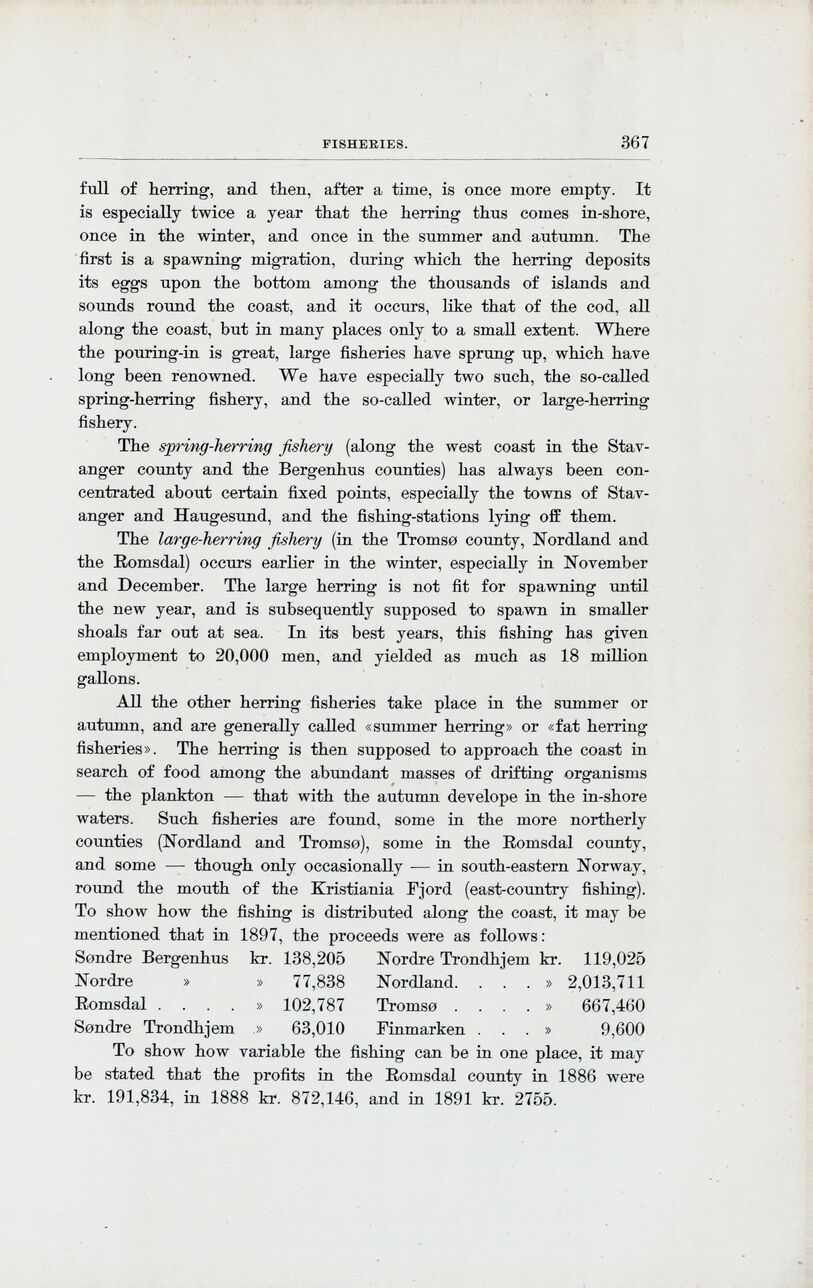
Full resolution (JPEG) - On this page / på denna sida - Fisheries, by Johan Hjort

<< prev. page << föreg. sida << >> nästa sida >> next page >>
Below is the raw OCR text
from the above scanned image.
Do you see an error? Proofread the page now!
Här nedan syns maskintolkade texten från faksimilbilden ovan.
Ser du något fel? Korrekturläs sidan nu!
This page has been proofread at least once.
(diff)
(history)
Denna sida har korrekturlästs minst en gång.
(skillnad)
(historik)
full of herring, and then, after a time, is once more empty. It
is especially twice a year that the herring thus comes in-shore,
once in the winter, and once in the summer and autumn. The
first is a spawning migration, during which the herring deposits
its eggs upon the bottom among the thousands of islands and
sounds round the coast, and it occurs, like that of the cod, all
along the coast, but in many places only to a small extent. Where
the pouring-in is great, large fisheries have sprung up, which have
long been renowned. We have especially two such, the so-called
spring-herring fishery, and the so-called winter, or large-herring
fishery.
The spring-herring fishery (along the west coast in the
Stavanger county and the Bergenhus counties) has always been
concentrated about certain fixed points, especially the towns of
Stavanger and Haugesund, and the fishing-stations lying off them.
The large-herring fishery (in the Tromsø county, Nordland and
the Romsdal) occurs earlier in the winter, especially in November
and December. The large herring is not fit for spawning until
the new year, and is subsequently supposed to spawn in smaller
shoals far out at sea. In its best years, this fishing has given
employment to 20,000 men, and yielded as much as 18 million
gallons.
All the other herring fisheries take place in the summer or
autumn, and are generally called «summer herring» or «fat herring
fisheries». The herring is then supposed to approach the coast in
search of food among the abundant masses of drifting organisms
— the plankton — that with the autumn develope [[** sic]] in the in-shore
waters. Such fisheries are found, some in the more northerly
counties (Nordland and Tromsø), some in the Romsdal county,
and some — though only occasionally — in south-eastern Norway,
round the mouth of the Kristiania Fjord (east-country fishing).
To show how the fishing is distributed along the coast, it may be
mentioned that in 1897, the proceeds were as follows:
| Søndre Bergenhus | kr. | 138,205 |
| Nordre » | » | 77,838 |
| Romsdal . . . . | » | 102,787 |
| Søndre Trondhjem | » | 63,010 |
| Nordre Trondhjem | kr. | 119,025 |
| Nordland . . . . | » | 2,013,711 |
| Tromsø . . . . | » | 667,460 |
| Finmarken . . . | » | 9,600 |
<< prev. page << föreg. sida << >> nästa sida >> next page >>